8 Key Sakura Types in Japan
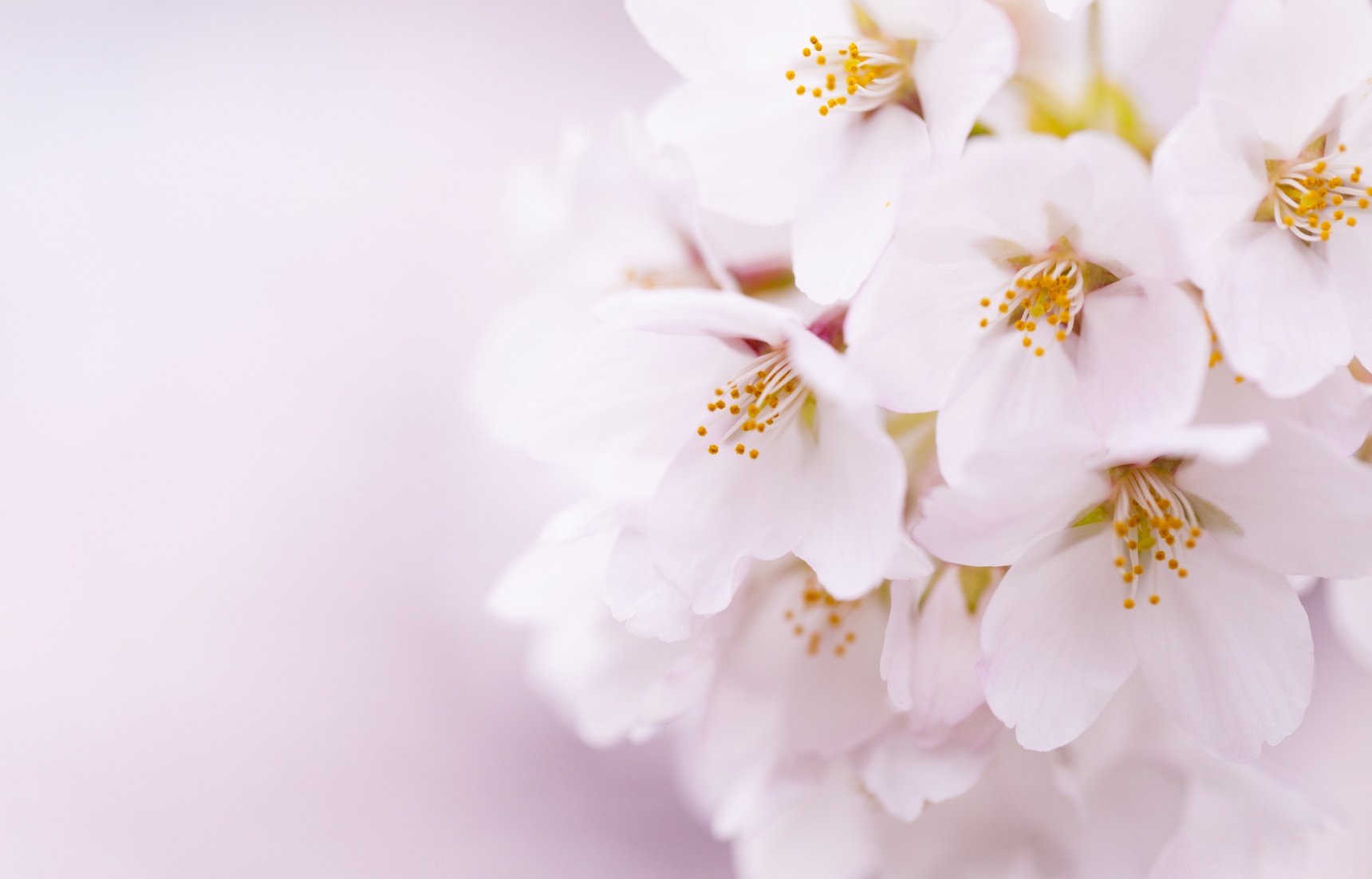
As the winter winds leave Japan, cherry blossoms bud across the nation, with people thronging to parks to take in the beautiful views. Before you step outside for hanami this year, be sure to check this guide to a few of the most beloved cherry blossom types in Japan!
By Maya Malloy8. Yama-zakura
https://ja.wikipedia.org/wiki/%E3%83%A4%E3%83%9E%E3%82%B6%E3%82%AF%E3%83%A9
The Yama-zakura (literally, "mountain cherry tree") is the representative type of wild cherry tree in Japan. The blossoms have five relatively small petals, and are generally sightly pink, though other color variations are possible. In fact, even Yama-zakura growing in the same area will typically bloom at slightly different times, meaning you can enjoy hanami (cherry blossom viewing) for a fairly long period of time in the same area as the individual trees successively display their blooms. However, since the leaves appear at the same time as the blooms, they tend not to look as vibrant as other cherry tree species. A long-lived tree, Yama-zakura have been found to live 500 years or more.
7. Oyama-zakura
https://ja.wikipedia.org/wiki/%E3%82%AA%E3%82%AA%E3%83%A4%E3%83%9E%E3%82%B6%E3%82%AF%E3%83%A9
Similar in size and shape to the Yamazakura, Oyama-zakura are commonly seen in the more northern parts of Japan, as well as the island of Shikoku. The name itself literally translates as "big mountain cherry tree," and these trees are quite similar to Yamazakura with larger leaves and petals. At the foot of Mount Iwaki in Hirosaki City, Aomori, you can find a 20-kilometer (12-mile) stretch of road lined with some 6,500 Oyamazakura cherry trees.
6. Oshima-zakura
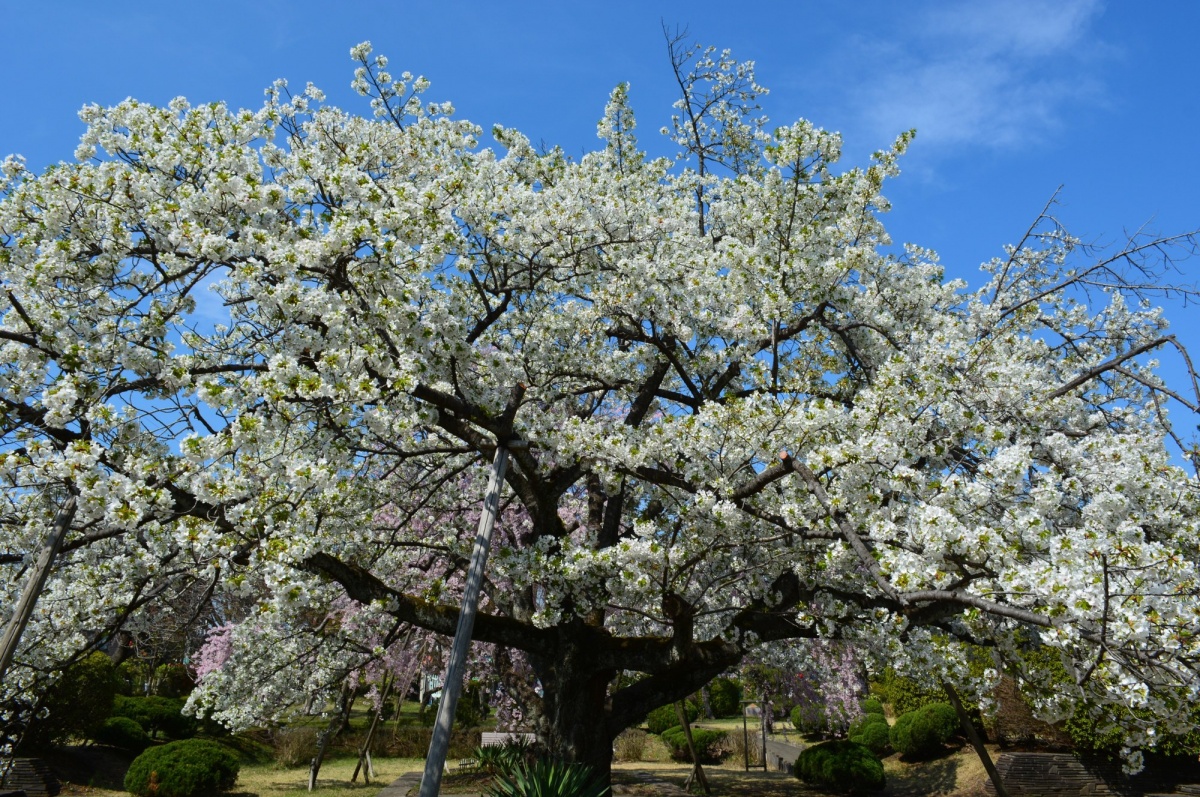
Native to the Izu Islands off the coast of Shizuoka Prefecture's Izu Peninsula, these cherry trees are named after the large island of Oshima. The island is home to a 700-year-old Oshima-zakura with a trunk circumference of some 7 meters (23 ft). Oshima-zakura present plentiful white blooms, which are also used in traditional sweets.
5. Edo Higan
https://ja.wikipedia.org/wiki/%E7%A5%9E%E4%BB%A3%E6%A1%9C
These cherry trees are named after the spring equinox, or higan, which represents the time when they bloom. One of the most common forms of wild cherry tree in Japan, this bloom-covered beauty has a long history of standing tall for generations, with the Yamataka Jindai-zakura (pictured) in Hokuto City, Yamanashi, standing as the oldest cherry tree in Japan, estimated at 2,000 years old. Another example is the Ishiwari-zakura in Morioka City, Iwate, which is a relative youngster at a few years shy of 400.
4. Mame-zakura

https://ja.wikipedia.org/wiki/%E3%83%9E%E3%83%A1%E3%82%B6%E3%82%AF%E3%83%A9
Also known as the Fuji cherry, this variety has a unique blooming period that can last from late March until early May. The Mame-zakura is known for its relatively small size, both overall and of its bloom (hence mame, or bean), as well as the deep incisions in its leaves. These trees can survive severe cold temperatures, and are most commonly seen in Hakone and the Mount Fuji area. Be sure not to miss them if you're planning a spring trip to the region!
3. Takane-zakura
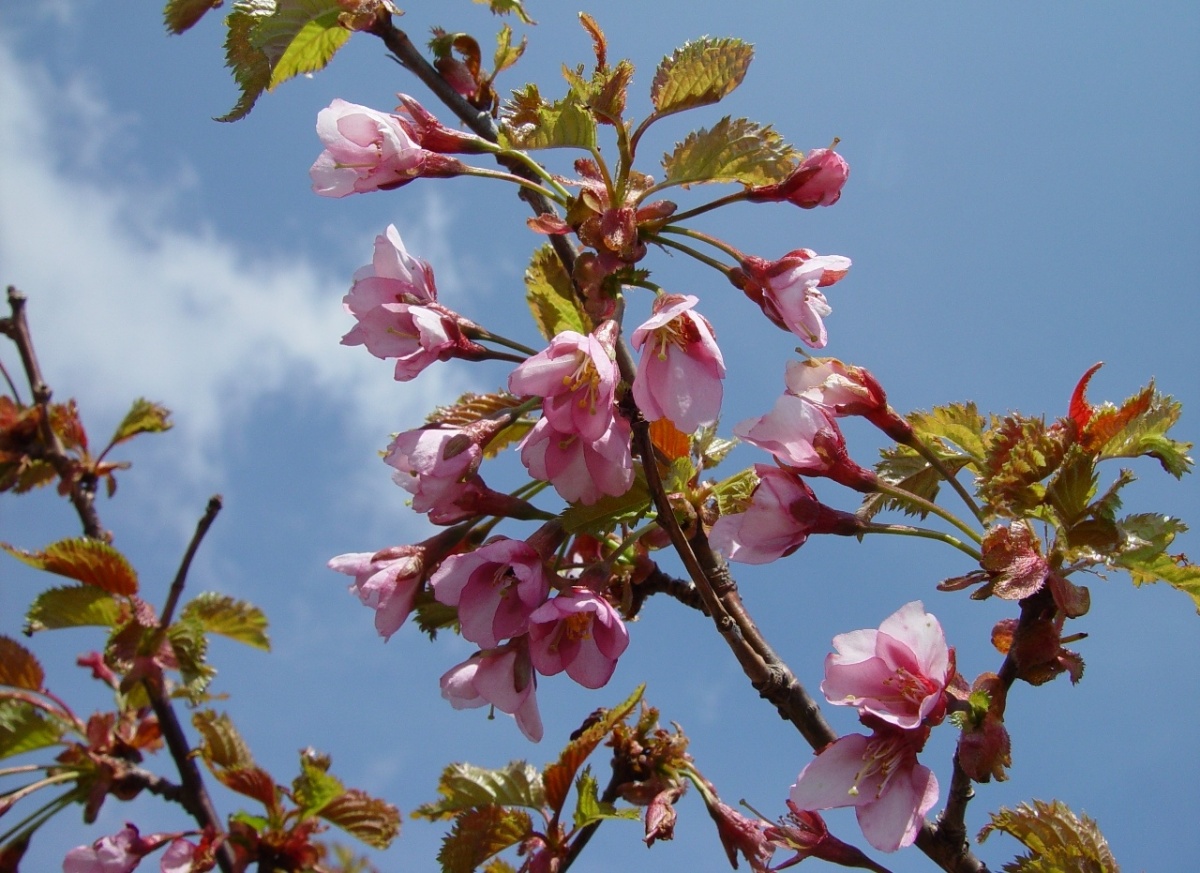
https://ja.wikipedia.org/wiki/%E3%82%BF%E3%82%AB%E3%83%8D%E3%82%B6%E3%82%AF%E3%83%A9
Native to the steep slopes of Hokkadio, the Takane-zakura, or Japanese alpine cherry, typically grows at high elevations in the wilderness (takane literally means high peak). They can also be seen in cooler parts of Honshu. If you're lucky, you can get a glimpse of these cherry blossoms along with a spectacular mountain view. Takane-zakura usually bloom early in May.
2. Somei Yoshino
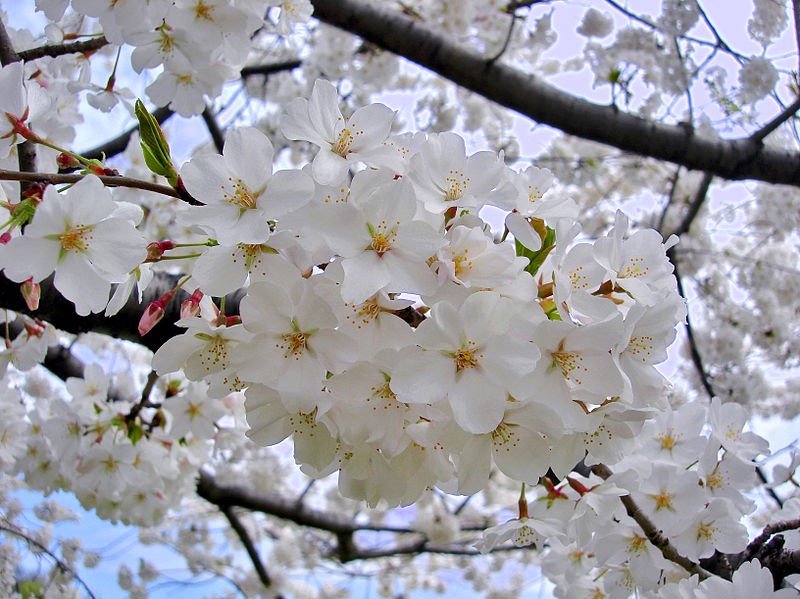
https://en.wikipedia.org/wiki/Prunus_%C3%97_yedoensis
The Somei Yoshino was said to have been cultivated in Tokyo, and is believed to be a cross between Oshima-zakura and Edo higan. It exploded in popularity in gardening and art during the Meiji Period (1868-1912), and was planted so broadly that it has become symbolic of cherry blossom season across the country. Somei Yoshino have even spread beyond Japan, being offered as gifts of friendship to Washington, D.C. and the city of Toronto, among others.
1. Shidare-zakura
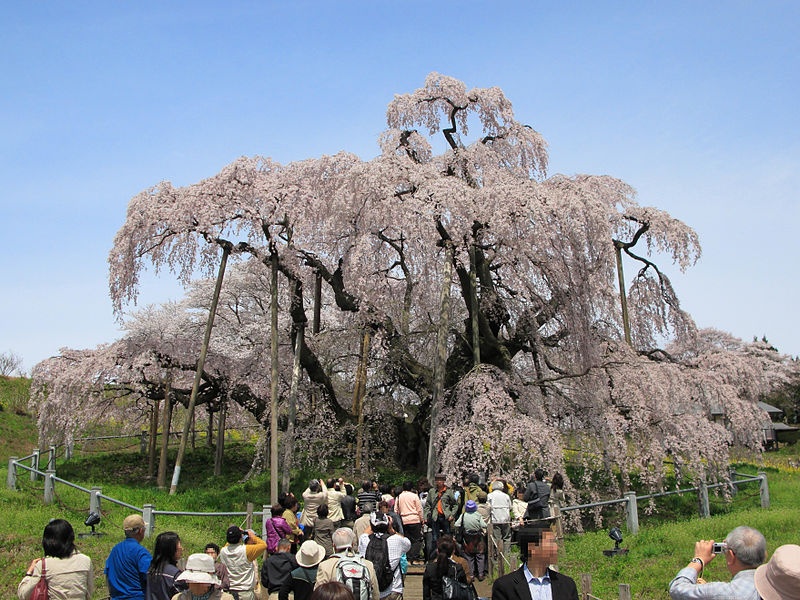
https://en.wikipedia.org/wiki/Miharu_Takizakura
Finally, we have the Shidare-zakura, which typically ranges from 5 to 15 meters (16-49 ft) tall, and can even reach a whopping 20 meters (66 ft). This spectacular tree's signature look is also the source of its name: shidare, or weeping cheery tree. Another long-lived species, the Miharu Takizakura (pictured) in the town of Miharu, Fukushima, is over 1,000 years old. Designated a National Treasure and recognized as one of the Three Great Cherry Trees of Japan, it blooms in mid to late April each year.



